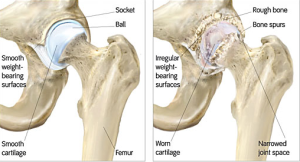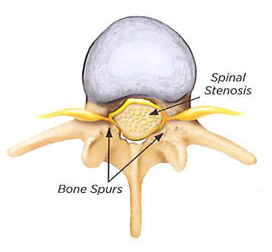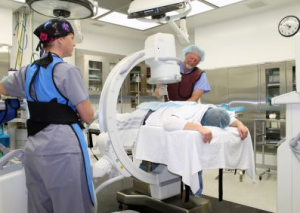When an individual reaches the age range between 50 to 75, arthritis is very common in the hip joint. One of the most common procedures that exists for hip pain is a total hip  replacement.
replacement.
However, it is very important in those patients who have hip pain to make sure that it is actually coming from the hip joint. In fact, a significant amount of the time, patients can be suffering from a spinal issue with radiating pain down into the hip joint. This can masquerade as a hip problem, when in fact, treatment for the spinal stenosis will actually relieve the discomfort.
Here are four methods that can help the Worker’s Compensation pain management doctor delineate where the pain is coming from.
1. Is a good old-fashioned physical examination. This should entail a range of motion examination of the spine and hip, palpation and provocative maneuvers to see where the pain is coming from. It is important to keep in mind that it is very possible an individual may  be having both a hip arthritis problem along with a spinal stenosis problem as well.
be having both a hip arthritis problem along with a spinal stenosis problem as well.
2. Along with the comprehensive physical examination, the second method of delineating where the pain is coming from involves x-rays and an MRI. If the x-rays show a significant amount of hip arthritis with joint deterioration and bone spurs, then it is quite likely that the hip is in fact the culprit.
However, if there’s only mild to moderate arthritis, then it could in fact be the spine. An MRI of the spine can show where nerve roots are being pinched from the stenosis from arthritis.
3 and 4. The third and fourth methods of evaluation for the problem can be extremely beneficial. These include an injection directly into the hip joint of numbing medicine, and possibly epidural steroid injections to see if relief from spinal stenosis can be achieved.

Fluoroscopy helps with injection accuracy. Arizona IMA has one in house.
The hip joint injection should be performed under fluoroscopy, which is a real-time form of x-ray. This way, the numbing medicine can be sure to go into the right place and within a few minutes if the hip joint is the problem, the patient should experience substantial relief.
If the pain does not subside, then it would be prudent to proceed with epidural steroid injections to see if that relieves the pain.
With these four methods, the distinction between where person’s hip pain is coming from can be properly determined.
Dr. Demitri Adarmes, the Medical Director at AIMA, is a Double Board Certified Arizona Workers Compensation doctor with extensive experience in pain management for those  injured at work or in a personal injury. The office is exceptional at helping with claims for AZ Work Comp and Federal Injured Workers as well.
injured at work or in a personal injury. The office is exceptional at helping with claims for AZ Work Comp and Federal Injured Workers as well.






Leave A Comment